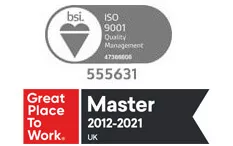PRK / LASEK eye surgery
What is commonly known as LASEK eye surgery actually refers to a number of very similar forms of laser eye surgery: PRK, LASEK, ASA, Epi-LASIK and Epi-LASEK.
These procedures are all minor variations on the same surgical theme. They are what is known as surface procedures – varieties of the original form of laser eye surgery, known as excimer laser photorefractive keratectomy (PRK).
PRK eye surgery was introduced in the 1980s, and has successfully transformed the vision of millions of people. Since the early 1990s, it has evolved into what is now known as advanced PRK, or Advanced Surface Ablation (ASA).
Since having the surgery I have begun to notice things that hadn’t occurred to me when wearing glasses, like waking up and being able to see clearly . It has also increased my own self confidence a great deal. Adam
In all surface procedures, instead of creating a flap, the surgeon removes the cornea’s outer skin (epithelium), and uses the same laser to reshape the exposed substance of the cornea. The surface skin then grows back over the next few days.
Find out if you are a suitable candidate for LASEK eye surgery by contacting one of our Patient Care Coordinators.
Results with PRK/LASEK
Scientific comparison of these varieties of PRK has shown no differences between them in terms of results. However, studies have shown that advanced PRK offers slightly faster recovery, and slightly less discomfort than the others.
At the London Vision Clinic, we now only use PRK for 5 to 10% of patients. These tend to be those with unusually thin or flat corneas for whom LASIK eye surgery would be impractical.
However, because the cornea’s surface is mechanically removed in PRK, the levels of discomfort and recovery times are both higher than with LASIK. Generally, your vision will be good enough to drive a car within two to three weeks following your LASEK eye surgery, but you may not achieve your best vision until between six weeks and three months after surgery.
Find out about our other pioneering surgeries for ageing eyes.


